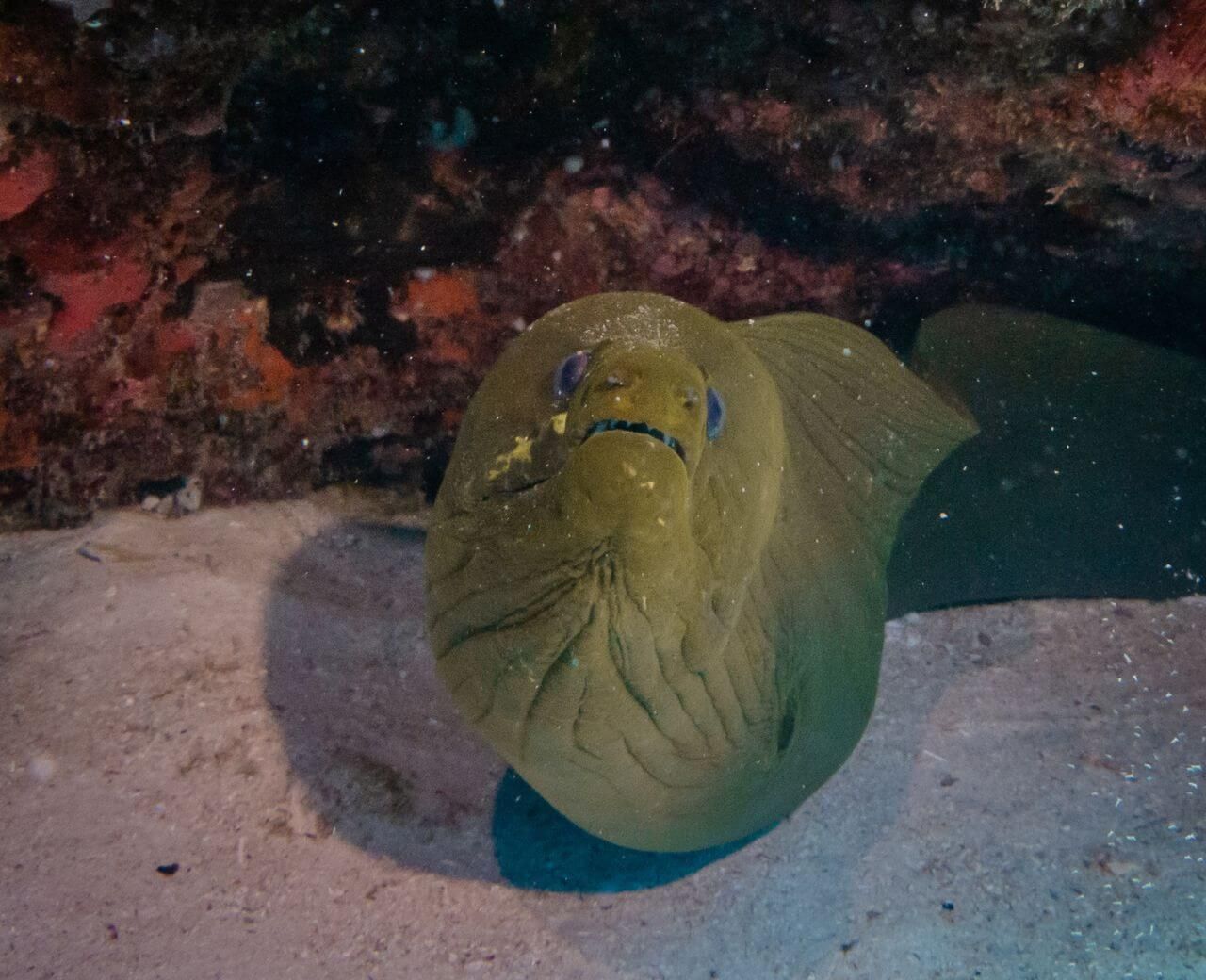Moray Eels

Let's Learn About Moray Eels
Word of the Week
Ambush
Ambush means to sneak attack. Ambush predators sneak up on their prey or remain hidden until they are close enough to attack.
Moray eels, tigers, and praying mantises are ambush predators.
Fast Facts
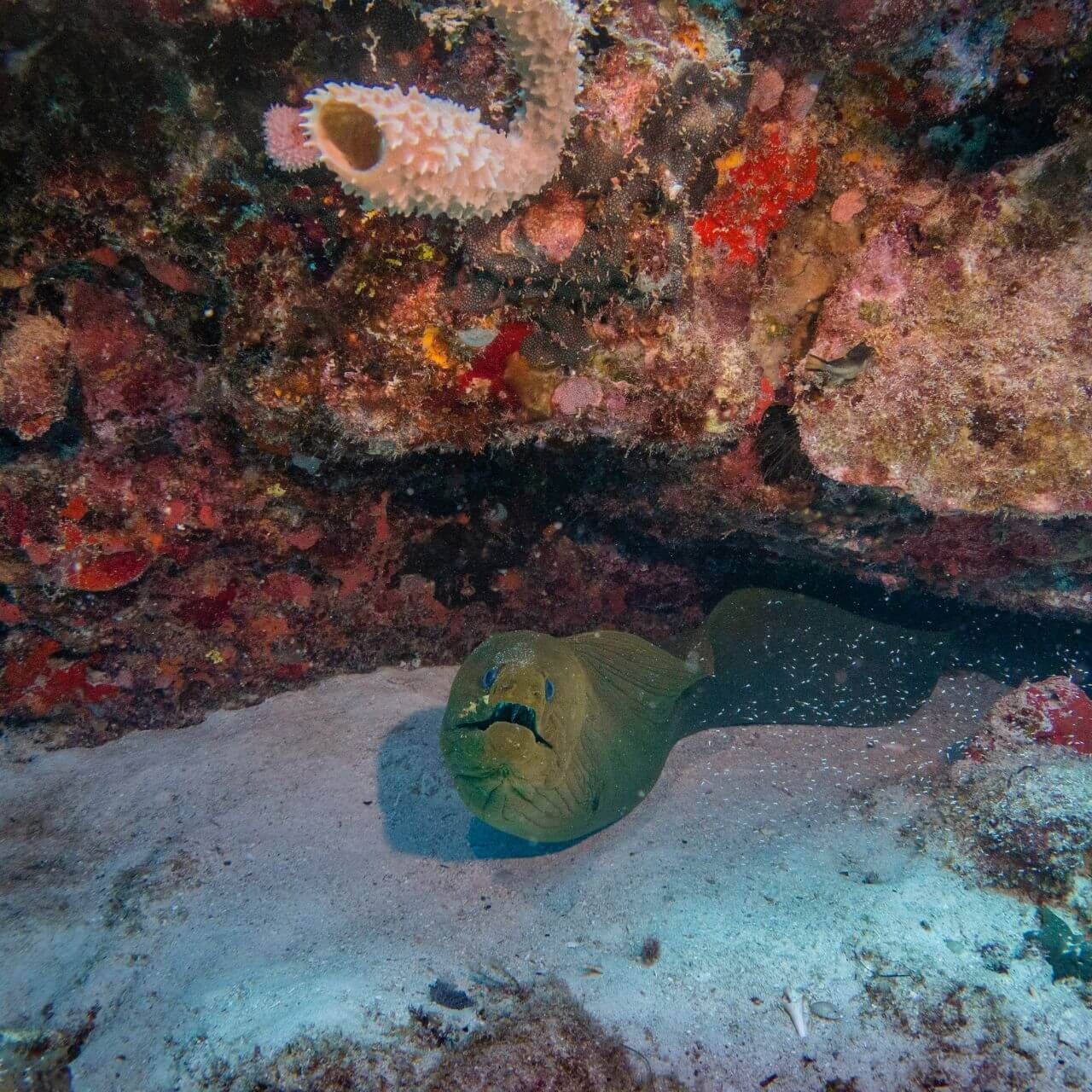
Where do moray eels live?
Most moray eels live in warm ocean waters. They are found near coral reefs and rocky sea beds.
Some moray eels live in cooler temperate water or freshwater. They inhabit areas with lots of food and hiding places.
What do moray eels eat?
Moray eels are carnivores; they eat meat.
Moray eels ambush prey like fish, crabs, squid, and octopuses. They hide in rocks or coral as they wait for prey to swim by. They also use their long, thin bodies to hunt in small crevices where prey hides.
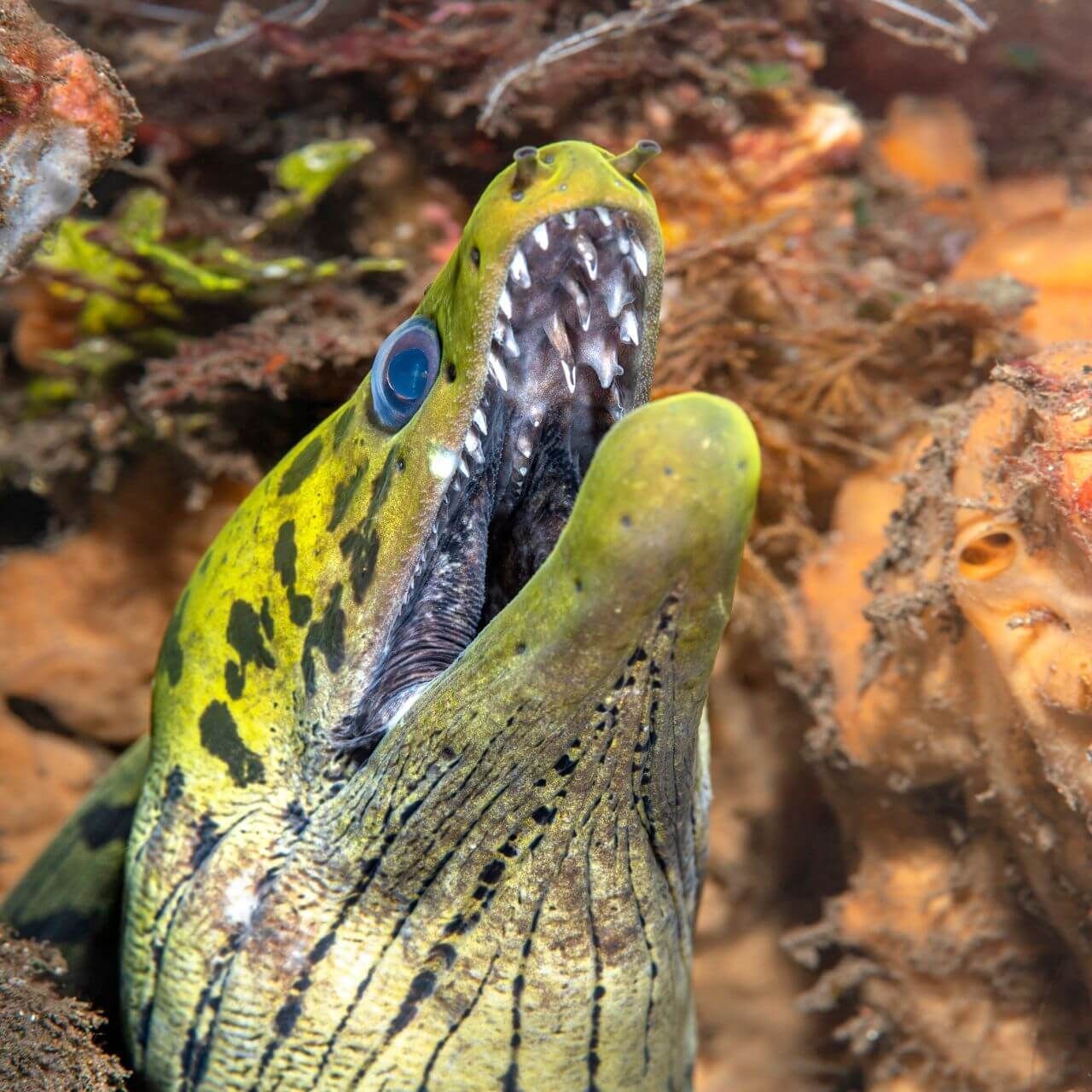
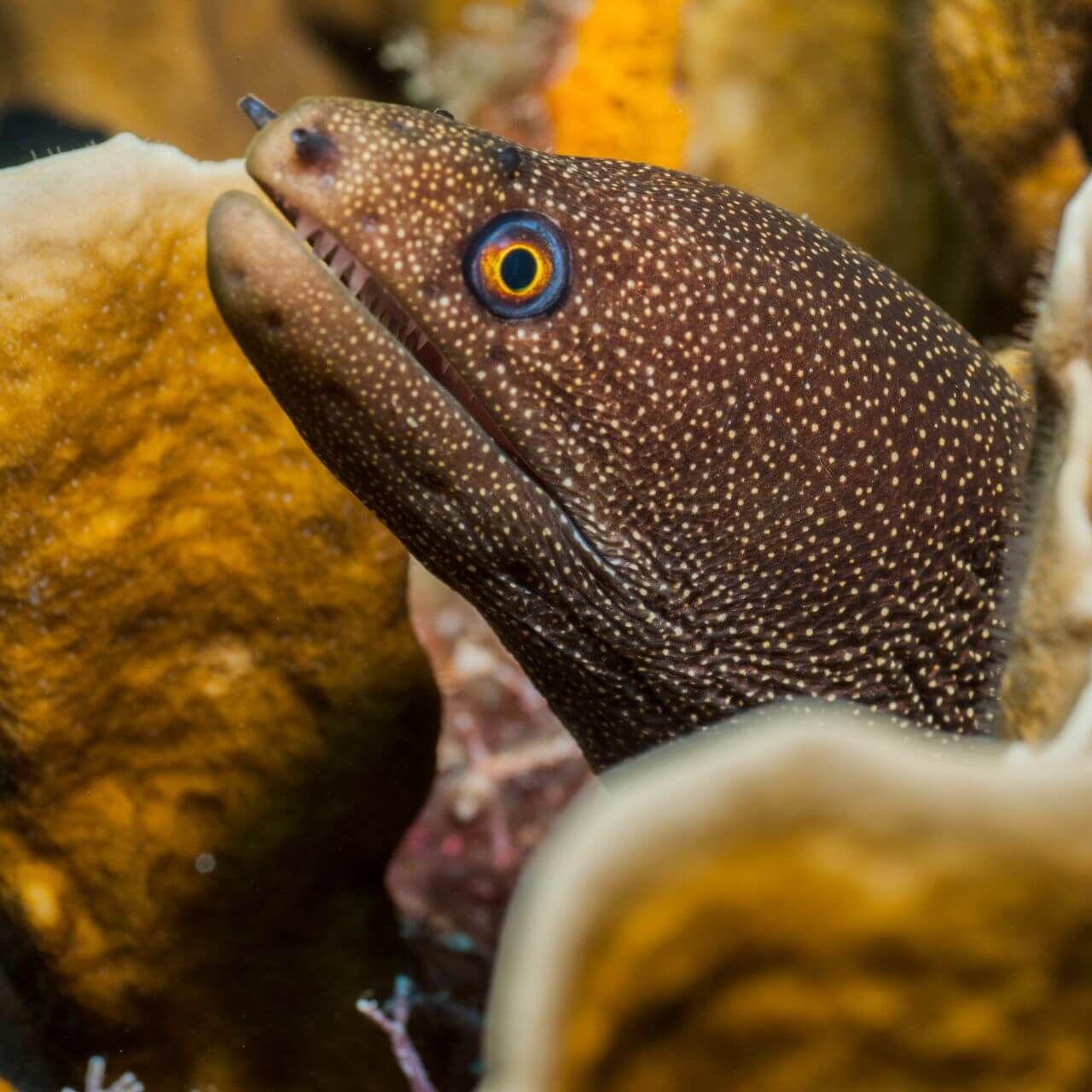
What traits do moray eels share?
Moray eels are a family of fish. They have many traits in common!
- Moray eels catch prey with sharp teeth.
- They have a specialized jaw to pull prey into their mouth.
- They do not have scales.
- Like all fish, moray eels breathe with gills.
- They are covered in a coating of mucus.
How many moray eels are there?
There are roughly 200 species of moray eels.
Fortunately, most moray eels are not endangered. However, they face a few threats, such as habitat loss of coral reefs. They are also collected for the aquarium trade.
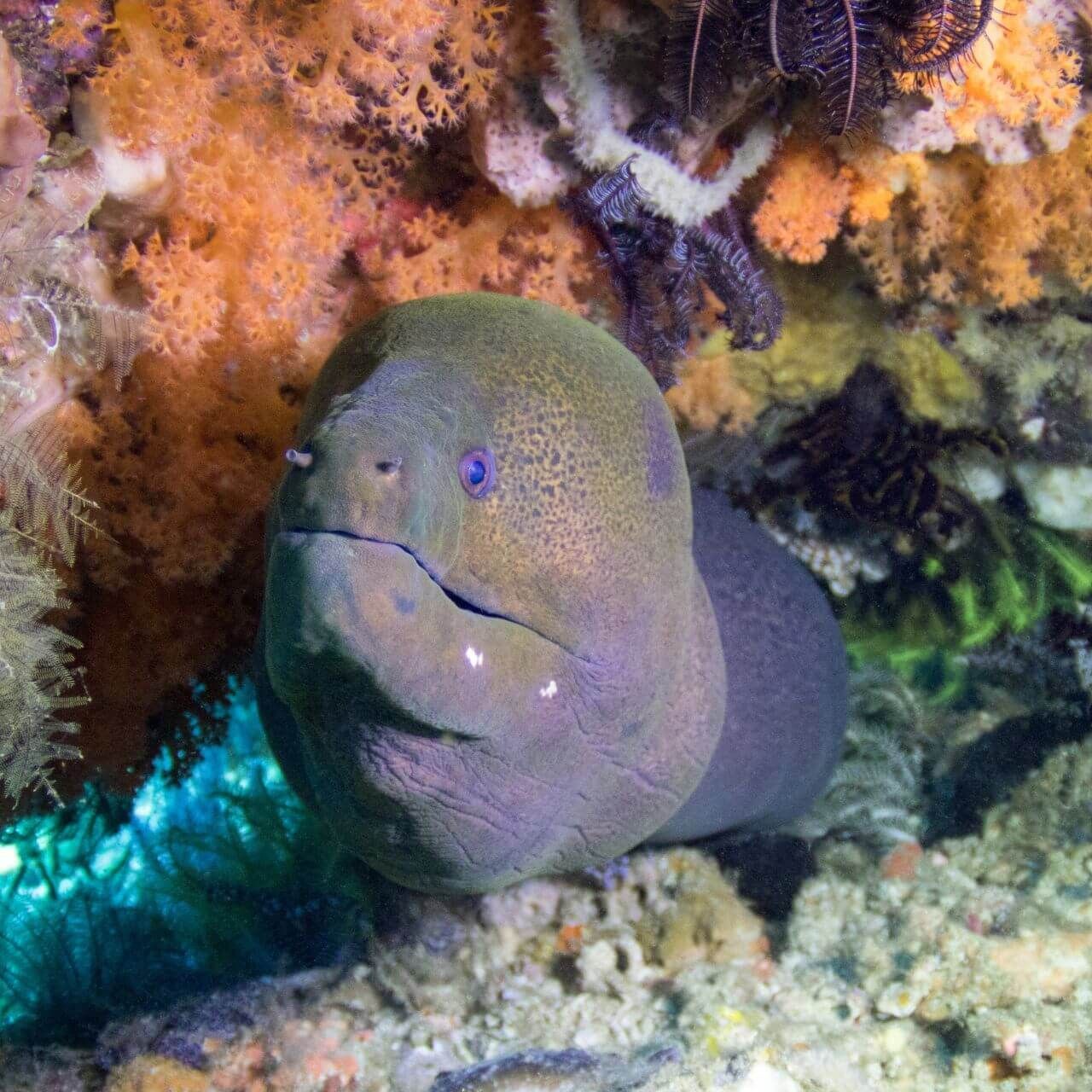
Species Spotlight
Green Moray Eel
Gymnothorax funebris
Like most moray eels, green moray eels get a bad reputation. Many people are alarmed by their snake-like bodies, sharp teeth, and spooky green color. However, green moray eels are misunderstood. They are not snakes; they are fish. Their sharp teeth are used for catching prey, not attacking swimmers. AND, they are not even green!
Green moray eels have brown skin. They are covered in a coating of yellow mucus that makes them look green. The slimy mucus of moray eels helps them in a few ways. Unlike most fish, moray eels do not have scales. The mucus protects their skin instead. It also allows them to slip into tight spaces in corals and rocks while hunting or hiding.
Green moray eels are one of the top predators in their habitat. They hide in coral reefs and rocky crevices to hunt small animals, and they are not picky eaters. Green morays eat many types of fish, crabs, shrimp, octopuses, squid, and more. They ambush prey, then catch them using sharp teeth and a specialized jaw.
These powerful predators do not have many predators of their own. They stay out of reach from most predators when tucked deep in the reef. If attacked, they use their slippery body and strong bite to escape. These unusual and misunderstood fish have proven to have some incredible survival skills.
Conservation Corner
Aquarium Trade
Aquariums are one of the most beautiful and interesting places to visit. You can be hundreds of miles from the ocean and still see tropical fish, moray eels, and hundreds of other animals. Many businesses, like dentists, hotels, and shopping centers, have aquariums, too. Thousands of people even have them in their homes.
It takes a lot of sea animals to fill these aquariums, so I wonder...
Where do aquarium animals come from?
Many aquarium animals, like sea horses and stingrays, reproduce and are born in an aquarium. Some aquariums breed endangered sea animals so they do not become extinct.
Animals like sea turtles, manatees, and seals are often rescued from the wild. If they cannot be released due to an injury or illness, they may live the rest of their lives at the aquarium.
Unfortunately, many aquarium animals are taken from the wild and sold as part of the aquarium trade. Recently, scientists gathered new data from shipping forms. They were able to see how many aquarium animals were sent to the United States over several years.
The scientists discovered that millions of aquarium animals were shipped to the US from more than 40 countries. Have this information can now be used to understand how the aquarium trade affects coral reefs and other ocean environments.
Learn More!
Glossary
Adaptation
The process by which a species becomes more fit for its environment over the course of several generations. It is a result of natural selection.
Apex Predator
The animal at the top of its food chain; it has no natural predators.
Ambush
Sneak attack.
Aquarium Trade
The buying, selling, and shipping of ocean animals for public or personal aquarium tanks.
Camouflage
The ability for an organism to blend into their surroundings usually to hide from prey or predators.
Carnivore
An animal that primarily eats meat.
Cooperative Hunting
A strategy used by some predators to catch prey by working as a team.
Coral Reef
An ocean habitat made of many individual corals typically found in warm, shallow waters.
Fish
A group of ectothermic (cold-blooded) animals that live primarily or entirely in water, have fins instead of limbs, and breathe using gills.
Gills
The respiratory organ that allows fish, amphibians in their larval phase, and crustaceans to absorb oxygen molecules from water.
Mucus
A slimy substance produced by animals (often by a membrane on their skin).
Pharyngeal Jaw
A second set of jaw that sit further back in the mouth that aid in grabbing and eating prey.
Poaching
The illegal act of hunting or capturing an animal.
Predator
An animal that hunts other animals for food.
Prey
An animal that is hunted and eaten by another animal.
Species
A closely related group of animals with similar characteristics that are capable of reproducing (example: tigers).
Temperate
A region that has mild temperatures.
Tropical
A region near the equator that has warm temperatures year round.
Vertebrate
An animal that has a backbone.
Sign Up for our Newsletter
Stay up to date with new adventures, live classes, deals, and more!

Helpful Resources
*Please note we do not offer refunds for EdZOOcating Adventures memberships. We recommend you explore the 3-day free trial prior to subscribing!*

